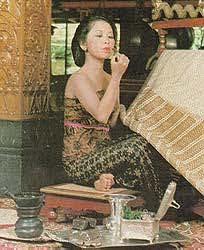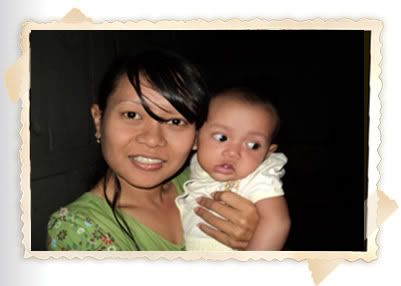
 stamped batik, the design of which takes months to create; double weave ikat from the islands of Nusa Tenggara, ship cloth from Lampung, silk Bugis sarong from Sulawesi, gold-painted Balinese prada fabric; shimmering kain songket from Palembang utilizing silver and gold metallic threads weft in woven cotton or silk ikat; and Tapis weavings from Lampung.
stamped batik, the design of which takes months to create; double weave ikat from the islands of Nusa Tenggara, ship cloth from Lampung, silk Bugis sarong from Sulawesi, gold-painted Balinese prada fabric; shimmering kain songket from Palembang utilizing silver and gold metallic threads weft in woven cotton or silk ikat; and Tapis weavings from Lampung.Weavings from the 27 provinces utilize different materials, methods, colors and designs. Primarily formed on back looms, weeks or months are spent creating intricate designs for
 everyday use or ceremonial wear. These weavings are primarily known by the different techniques that are used to create the distinctive designs.
everyday use or ceremonial wear. These weavings are primarily known by the different techniques that are used to create the distinctive designs. The symbolism of the various ethnic groups is evident in the variety of textiles. Color, shapes and their arrangements all have special meanings. Certain designs can only be worn by women or men, or only by the members of the royal family or nobility.
Special textiles are worn or exchanged in life cycle or rights of passage ceremonies
 celebrating birth, circumcision, puberty, marriage, childbearing and death. Textiles play an important role in many traditional events and ceremonies.
celebrating birth, circumcision, puberty, marriage, childbearing and death. Textiles play an important role in many traditional events and ceremonies.Written records dating to the fourteenth century document the importance of textiles in the social and religious lives of Indonesians. The highly distinctive traditional dress, or pakaian adat, best shows the diversity of uses of textiles throughout the archipelago. The even more elaborate bridal dress displays the best of each province's textile and ornamental jewelry traditions.





0 comments:
Post a Comment